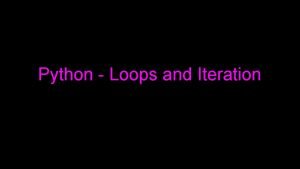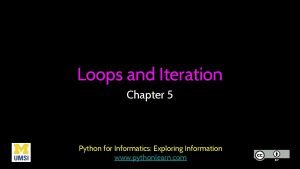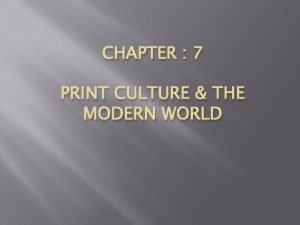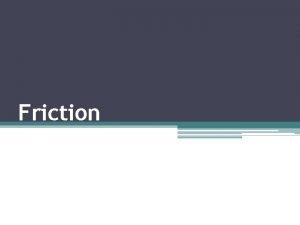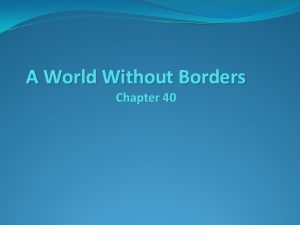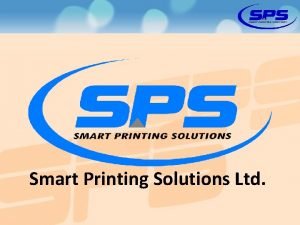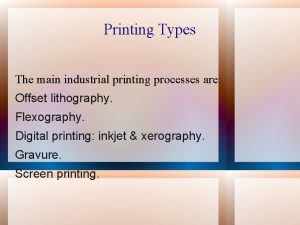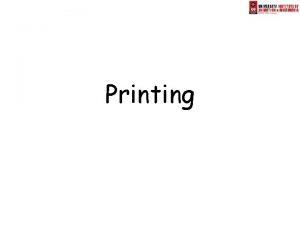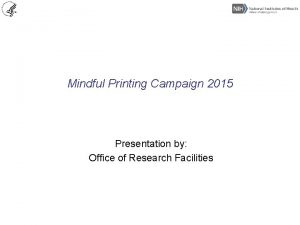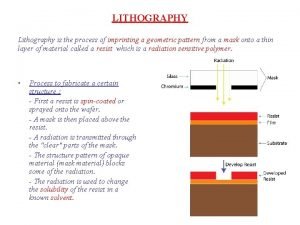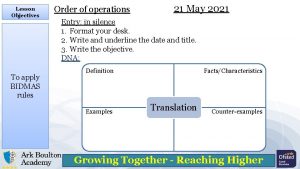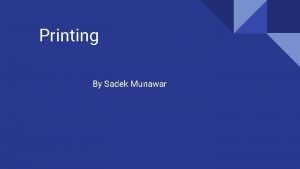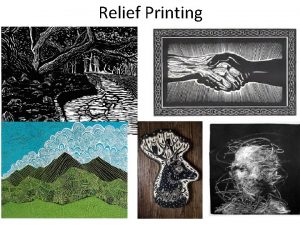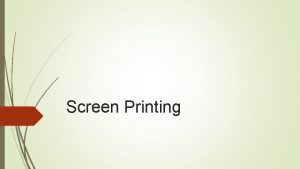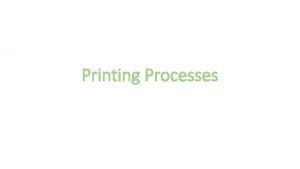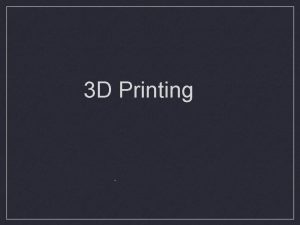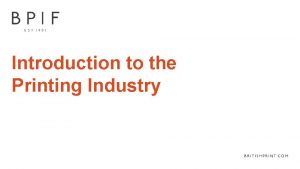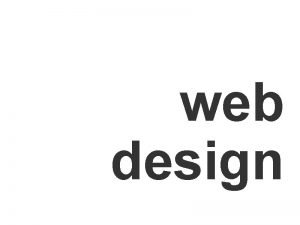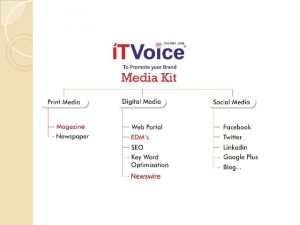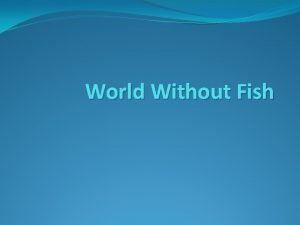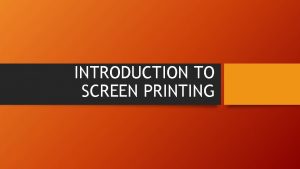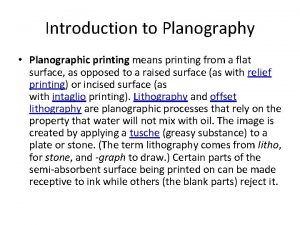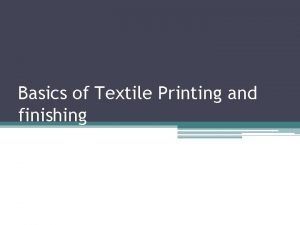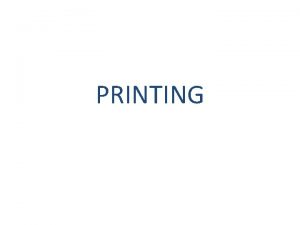Introduction to Printing A world without print Print



















- Slides: 19

Introduction to Printing

A world without print!

Print Production workflow Pre-press Printing Finishing

Stages of pre-press Preparation of designs Preparation of copy for setting Text setting and proofing Reading and correcting Page make-up Illustrations Imposition Image carriers

Design Printed work starts with a design made up of type and/or images. The traditional measure of type is ‘points’. The term ‘image’ is used to describe the various kinds of illustrations, which are usually either ‘bitmap’ (halftone) or ‘linework’ illustrations. Artwork for print is mostly created in ‘digital’ format, using software programs

Digital Artwork Digital artwork may be created by using: a computer keyboard a scanner optical character recognition software a digital camera drawing or painting software programs page make-up or DTP software programs

Machine Printing

Flexographic Printing (Relief Process) Relief image using ink release from cells in ‘anilox’ roller to transfer ink to plate to substrate Typical uses include food packaging, labels, wall coverings and newspapers

Gravure Printing (Intaglio Process) Intaglio process transferring ink from an engraved cylinder onto substrate Typical uses include magazines, packaging, security Printing and catalogues

Screen Printing (Stencil Process) Transfers ink by pushing ink through a photographed mesh onto the substrate Typical uses include non-standard shapes, clothing, large format rigid displays and signage.

Lithographic Printing (Planagraphic Process) Planagraphic process uses the chemical reaction of ink and water to transfer image from printing form (plate) onto substrate Typical uses include magazines, brochures, leaflets, packaging, stationery, point of sale, business cards, aerosol and drink cans, virtually anything

Digital Printing Digital process uses electronic data from a computer system and outputs it direct to a reproduction system which can range from simple desktop printers to large directly imaged printing presses Typical uses include short run work, personalised, leaflets, business cards, banners, car wraps and labels

CMYK vs RGB

Pantone – colour matching system

Finishing Operations Folding Trimming, dividing, cutting, creasing Insetting or gathering Securing Covering Decoration Fabrication

Folding

Insetting

Insetting

UK Printing Facts & Figures Is the world's fifth largest producer of printed products Has a turnover of £ 14 billion Has 112, 000 employees Consists of 8, 000 companies Has a gross added value of £ 5. 5 billion Made a P. A. capital investment of £ 650 million in 2016 Had a positive trade of £ 742 million in 2018
 Woodblock printing definition ap world history
Woodblock printing definition ap world history Gutenberg printing press ap world history
Gutenberg printing press ap world history Iteration.n5 - how many panels?
Iteration.n5 - how many panels? Iteration n5
Iteration n5 Without title poem pdf
Without title poem pdf Without title poem
Without title poem Why does pablo neruda urge to keep quiet
Why does pablo neruda urge to keep quiet Print culture and the modern world
Print culture and the modern world Print culture and the modern world
Print culture and the modern world A world without color
A world without color A world without friction
A world without friction Chapter 38 a world without borders outline
Chapter 38 a world without borders outline Chapter 40 a world without borders
Chapter 40 a world without borders Recommendations of yashpal committee report 1993
Recommendations of yashpal committee report 1993 Smart printing solutions
Smart printing solutions Types of industrial printing
Types of industrial printing Brief history of printing
Brief history of printing Broadnax printing
Broadnax printing Contact printing
Contact printing Bodmas printing
Bodmas printing


